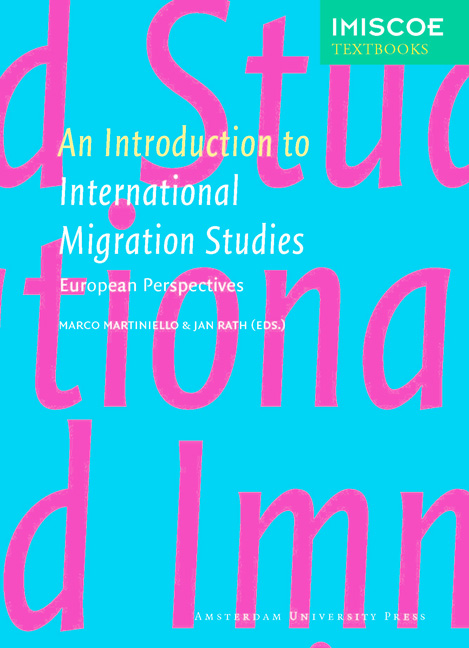4 - Social Networks and International Migration
Published online by Cambridge University Press: 14 January 2021
Summary
Introduction
This chapter looks at the relationship between social networks and international migration. It defines social networks and explains the relevance of the social networks approach to international migration. After outlining the main types of social networks involved in migration today, it discusses the heterogeneity of networks based on gender, ethnicity, race and generation. The chapter also reviews the impact on these networks of external forces and characteristics, especially immigration history and policies. The final section critiques the social networks approach and makes suggestions for future research.
What are social networks?
Ties or connections between individuals that vary in strength, type and duration (Granovetter 1973; Wellman 1979; Williams 2006) are referred to as ‘social networks’. They are often based on reciprocal exchanges or shared goals (Lomnitz 1976; Feld 1981; Gurak and Caces 1992), which can vary over time, depending on the circumstances. Several different variables are used to measure social networks. For example, in the early 1970s, Granovetter focused on the ‘strength’ and ‘weakness’ of social ties. According to the author, the strength of an interpersonal tie is based on ‘the amount of time, the emotional intensity, the intimacy (mutual confiding), and the reciprocal services which characterize the tie’ (Granovetter 1973: 1361). Using these criteria, one can assess whether a tie is strong, weak or absent. Other scholars have measured networks based on their density within a given area. In denser areas, the size of the network increases, and individuals have more contacts with whom to exchange information and resources. However, once networks become too dense, a ‘congestion’ effect arises whereby individuals have too many friends to transmit information, and this eventually reduces the efficiency of information exchange (Zenou and Wahba 2005). To summarise, the strength and density of ties are two common measures of social networks.
What is the social networks approach?
A significant limitation of current social theories is their inability to relate micro-level interactions to macro-level phenomena. The meso-level nature of the social networks approach bridges this gap by demonstrating how interaction within small groups aggregates to large-scale patterns (Granovetter 1973). In particular, it outlines the connections and relationships among individuals, as well as between individuals and the larger community (Wellman 1979; Goldenberg and Haines 1992). Since the community is understood in terms of networks rather than a bounded physical territory, it can span geographical regions and borders.
- Type
- Chapter
- Information
- An Introduction to International Migration StudiesEuropean Perspectives, pp. 79 - 106Publisher: Amsterdam University PressPrint publication year: 2012
- 2
- Cited by



